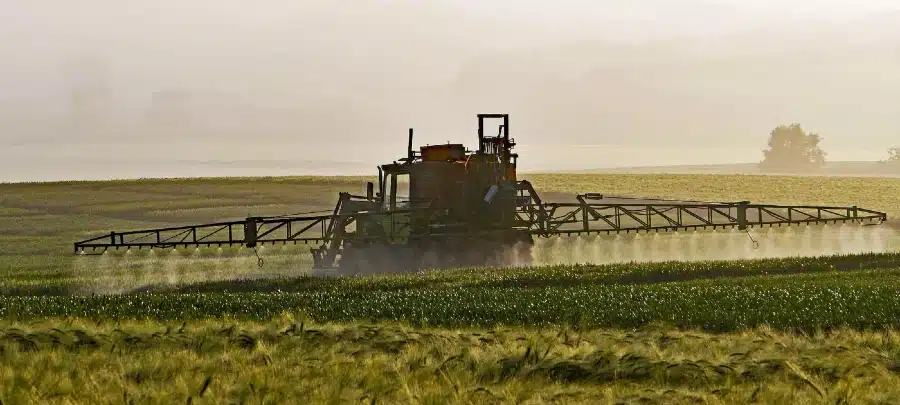Equador e Uruguai combatem a poluição e os impactos tóxicos da agricultura

In a concerted effort to tackle the pervasive issue of agricultural pollution, the governments of Ecuador, India, Kenya, Laos, Philippines, Uruguay, and Vietnam have joined hands to launch a substantial US$379 million initiative. This initiative aims to address the environmental and health risks posed by the extensive use of pesticides and plastics in agriculture.
Chemicals such as pesticides and agricultural plastics are integral to modern farming practices, contributing significantly to food production. However, the alarming scale of their usage—nearly 4 billion tons of pesticides and 12 billion kilograms of agricultural plastics annually—comes with substantial consequences.
The detrimental impact of these chemicals on human health and the environment cannot be understated. Annually, approximately 11,000 lives are lost due to the toxic effects of pesticides, while chemical residues degrade ecosystems, compromise soil health, and reduce farmers’ resilience to climate change. Additionally, the burning of agricultural plastics exacerbates the global air pollution crisis, contributing to one in nine deaths worldwide.
Não perca essa chance! Assine nosso boletim informativo para receber o conteúdo mais recente diretamente em sua caixa de entrada ou registro GRATUITAMENTE para obter acesso total.
Of particular concern are highly hazardous pesticides and mismanaged agricultural plastics, which release toxic persistent organic pollutants (POPs). These chemicals persist in the environment, contaminating air, water, and food supplies. Despite their adverse effects, these inputs remain popular due to their lower costs compared to sustainable alternatives, presenting a significant challenge to encouraging widespread adoption of better practices.
The Financing Agrochemical Reduction and Management Programme (FARM), spearheaded by the UN Environment Programme (UNEP) with financial backing from the Global Environment Facility (GEF), seeks to address these challenges. Over a five-year period, FARM aims to prevent the release of over 51,000 tons of hazardous pesticides and more than 20,000 tons of plastic waste. Furthermore, it anticipates avoiding 35,000 tons of carbon dioxide emissions and protecting over 3 million hectares of land from degradation as farms transition to low-chemical and non-chemical alternatives.
Anil Sookdeo, Chemicals Coordinator at the GEF, emphasizes the importance of transitioning away from harmful chemicals, stating, “Our current agricultural system relies on harmful chemicals, this is not necessary. FARM offers a powerful alternative model, empowering farmers with the knowledge and resources to transition to sustainable practices that safeguard our health and environment and also boost yields and profits.”
To achieve its objectives, the FARM programme will advocate for government regulations to phase out POPs-containing agrochemicals and agri-plastics, while promoting better management standards. Additionally, it will work to enhance banking, insurance, and investment criteria to facilitate the adoption of effective pest control, production alternatives, and trade in sustainable produce.
Sheila Aggarwal-Khan, Director of UNEP’s Industry and Economy Division, underscores the necessity of adopting safer alternatives to highly hazardous pesticides, stating, “Food productivity and safety is reliant on identifying better practices and safer alternatives to highly hazardous pesticides. Adoption is key to scaling these alternatives. There is no real option other than a strong, coordinated response to the pollution crisis.”
The launch event of the FARM programme brought together representatives from all seven participating countries, along with over 100 partners and stakeholders directly involved in the initiative. This collaborative effort signifies a significant step towards combatting agricultural pollution, fostering a more equitable and resilient food system.
The Financing Agrochemical Reduction and Management Programme (FARM) is supported by the United Nations Development Programme, United Nations Industrial Development Organization, and the African Development Bank. It represents a vital endeavor in the global fight against agricultural pollution and sets a precedent for concerted action to safeguard the environment and public health.
(image: UNEP/Pixabay)


Respostas